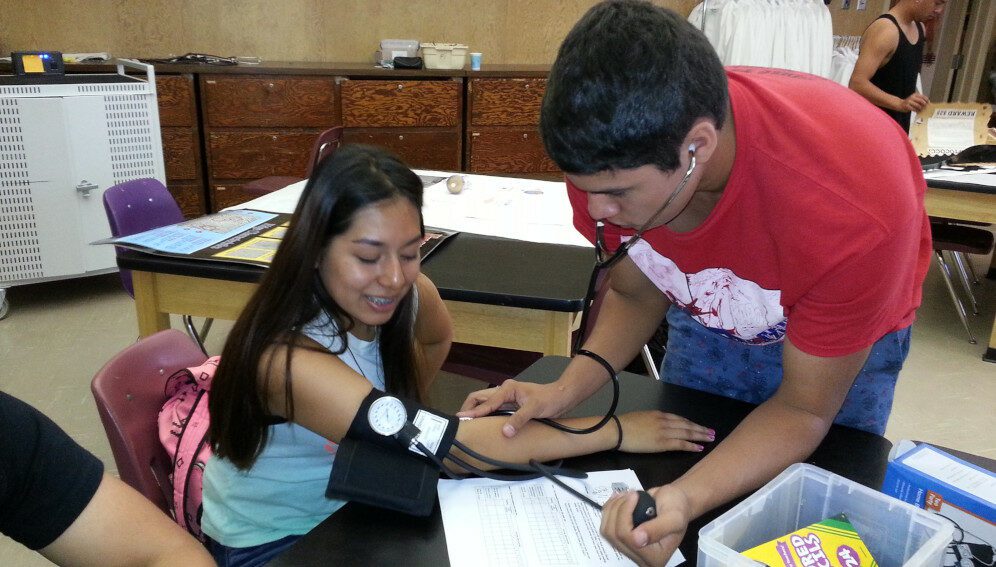06/04/22
US$140 billion needed to tackle lifestyle diseases – report

By: Sanjeet Bagcchi
Send to a friend
The details you provide on this page will not be used to send unsolicited email, and will not be sold to a 3rd party. See privacy policy.
Reaching UN goals on diseases such as cancer, heart disease and diabetes by 2030 will need an average investment of US$18 million a year, targeting policies to cut smoking, alcohol abuse, and unhealthy diets, according to global analysis.
These and other non-communicable diseases, including stroke and chronic respiratory diseases, kill 41 million people worldwide each year, with 77 per cent of deaths occurring in low- and middle-income countries, World Health Organization (WHO) data shows.
The majority of countries have made little progress towards Sustainable Development Goal (SDG) 3.4, which aims to reduce premature deaths from these types of diseases by a third between 2015 and 2030, says a paper published on 26 March in The Lancet. But the target for most of these illnesses could still be achieved with the right combination of interventions – reaping huge financial rewards in the process – it suggests.
“In India, tobacco-related cancers account for every third patient in [hospital outpatient departments].”
Suvadip Chakrabarti, surgical oncologist, Apollo Cancer Centre in Kolkata, India
The health policy paper sets out 21 recommended interventions to help 123 low- and middle-income countries achieve the SDG target, but warns that substantial technical and financial assistance may be needed from the global community.
Cherian Varghese, an author of the paper from the WHO’s department of non-communicable diseases (NCDs) in Geneva, Switzerland, told SciDev.Net: “Countries with policy, legislative and regulatory measures, including fiscal measures, for the prevention and control of NCDs, as well as strong and inclusive health systems have had the best outcomes against [them].
“In those countries, people living with and affected by NCDs are more likely to have access to effective NCD services, including protection against risk factors, screening for hypertension and diabetes, treatment of NCDs and consistent, quality follow-up and care,” Varghese said.
About 85 per cent of the 15 million premature deaths from non-communicable diseases among people aged between 30 and 69 take place in low- and middle-income countries, according to the WHO. The increase in these diseases is attributed mainly to physical inactivity, unhealthy diets, use of tobacco, and harmful use of alcohol.
In 2015 the SDGs were taken up by the United Nations as a “universal call to action” for ending poverty and ensuring “peace and prosperity” for all by 2030. SDG 3 deals with healthy lives and wellbeing. Target 3.4 aims to reduce early death from NCDs by a third by 2030 through prevention and treatment, and to promote mental health and wellbeing.
Katie Dain, one of the paper’s authors and chief executive officer of the NCD Alliance, a Switzerland-based non-governmental organisation, says all countries can achieve or nearly achieve the SDG target by 2030 “by introducing a cost-effective package of NCD prevention and treatment interventions”.
“The bottom line is that governments can reap substantial economic rewards, in both the short- and long-run, by taking bold action on NCDs and thus ensuring the fiscal sustainability of their health systems,” she told SciDev.Net.
To achieve the target globally an additional investment of US$140 billion is needed between 2023 and 2030, an average of $18 billion a year, the authors estimate. They say this would prevent 39 million deaths over the period – particularly from heart attacks and strokes – and reap economic rewards of US$2.7 trillion.
The experts say “catalytic aid” from international development agencies is necessary alongside domestic spending by governments to meet the goal. But budgetary constraints in low-income countries, exacerbated by the COVID-19 pandemic, have made national investment a challenge.
Mayowa Owolabi, dean of the faculty of clinical sciences at the University of Ibadan, Nigeria, told SciDev.Net: “These costs would comprise a considerable share of [a country’s] health budget. Mobilisation of additional resources would be required in low-income and lower-middle-income countries.”
Owolabi explained that challenges in meeting the SDG 3.4 target include lack of jawareness, low detection or diagnosis rates, low treatment rates, and poor control of diseases such as obesity and high blood pressure, or hypertension.
“A population-based multi-stakeholder, multi-sectoral approach including policymakers, patients, and indeed the entire populace across the life course is required,” he added. “This will include lifestyle interventions, creating an enabling environment that supports physical activities, and a healthy food value chain towards prevention of multiple NCDs.”
Specific interventions to speed up progress may vary nationally and regionally, according to the paper. But it says policies to cut behavioural risks including tobacco smoking, harmful alcohol use, and excess sodium intake are relevant for every country and can reduce the need for costly clinical services.
According to Varghese, non-communicable diseases need to be part of national preparedness and response plans. “The economic effects of the [COVID-19] pandemic are likely to have a long-term impact on NCD prevention and control,” he said.
Suvadip Chakrabarti, a consultant surgical oncologist at the Apollo Cancer Centre in Kolkata, India, believes that government initiatives alone are not enough to tackle the problem, especially in resource-limited countries.
He says behavioural change at the individual level is critical. “In India, tobacco-related cancers account for every third patient in [hospital outpatient departments]. The government can levy taxes, increase screening programmes, and increase the number of cancer centres, but [it is also important that the] population at large becomes aware and abstains from [tobacco] use.”
This piece was produced by SciDev.Net’s Global desk.















